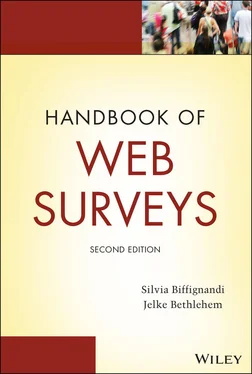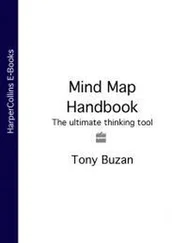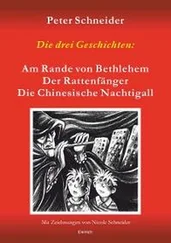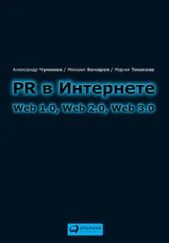2 Exercise 1.2 What is an advantage of an e‐mail survey over a traditional mail survey?Data quality is higher due to included checks.There is less under‐coverage.Response rates are higher.It has better facilities for navigation through the questionnaire.
3 Exercise 1.3 Why were the first surveys on the Internet e‐mail surveys and not web surveys?E‐mail surveys were cheaper.The World Wide Web did not exist yet.E‐mail surveys are more user friendly.E‐mail surveys require less data communication over the Internet.
4 Exercise 1.4 When should the form‐based approach be preferred over the question‐by‐question approach in a web survey?The questionnaire is very long.The questionnaire contains route instructions and edits.All questions fit on one screen.The survey is a business survey.
5 Exercise 1.5 Which of the four features is typically and advantage of web surveys?There is no under‐coverage.The sample size is always large.A survey can be designed and conducted very quickly.Accurate estimates can always be computed.
6 Exercise 1.6 How to avoid the problem of under‐coverage in a general population web survey?Conduct a mixed‐mode survey.Increase the sample size.Conduct a self‐selection web survey.Replace the web survey by an e‐mail survey.
7 Exercise 1.7 Why source integration is an interesting perspective?To optimize information.To conduct mixed‐mode surveys.To totally avoid web surveys.To run only paper surveys.
1 Barcaroli, G., Bianchi, G., Bruni, R., Nurra, A., Salamone, S., & Scarnò, M. (2016), Machine learning and statistical inference: the case of Istat survey on ICT. Proceeding of the Italian Statistical Society Conference, SIS, Salerno.
2 Barcaroli, G., Nurra, A., Salamone, S., Scannapieco, M., Scarnò, M., & Summa, D. (2015), Internet as a Data Source in the Istat Survey on ICT in Enterprises. Austrian Journal of Statistics, 44, pp. 31–43. doi: org/10.17713/ajs.v44i2.53.
3 Beręsewicz, M., Lehtonen, R., Reis, F., Di Consiglio, L., & Karlberg, M. (2018), An Overview of Methods for Treating Selectivity in Big Data Sources. Publication Office of the European Union, Luxembourg.
4 Bethlehem, J. G. (1987), The Data Editing Research Project of the Netherlands Central Bureau of Statistics. Proceedings of the Third Annual Research Conference of the US Bureau of the Census, U.S. Bureau of the Census, Washington, DC, pp. 194–203.
5 Bethlehem, J. G. (2009), The Rise of Survey Sampling. Discussion Paper 09015, Statistics Netherlands, The Hague/Heerlen, the Netherlands.
6 Bethlehem, J. G., Cobben, F., & Schouten, B. (2011), Handbook on Nonresponse in Household Surveys. Wiley, Hoboken, NJ.
7 Bethlehem, J. G. & Hofman, L. P. M. (2006), Blaise—Alive and Kicking for 20 Years. Proceedings of the 10th International Blaise Users Conference, Arnhem, the Netherlands, pp. 61–86.
8 Bethlehem, J. G. & Stoop, I. A. L. (2007), Online Panels—A Theft of Paradigm? The Challenges of a Changing World. Proceedings of the Fifth International Conference of the Association of Survey Computing, Southampton, U.K., pp. 113–132.
9 Beukenhorst, D. & Wetzels, W. (2009), A Comparison of Two Mixed‐mode Designs of the Dutch Safety Monitor: Mode Effects, Costs, Logistics. Technical paper DMH 206546, Statistics Netherlands, Methodology Department, Heerlen, the Netherlands.
10 Biffignandi, S. & Signorelli, S. (2016), From Big Data to Information: Statistical Issues Through Examples, in Studies. In: Gaul, W., Vichi, M., & Weihs, C. (eds.), Classification, Data Analysis, and Knowledge Organization. Springer, Berlin.
11 Bowley, A. L. (1906), Address to the Economic Science and Statistics Section of the British Association for the Advancement of Science. Journal of the Royal Statistical Society, 69, pp. 548–557.
12 Bowley, A. L. (1926), Measurement of the Precision Attained in Sampling. Bulletin of the International Statistical Institute, XII, Book 1, pp. 6–62.
13 Bycroft, C. (2010), Integrated Household Surveys: A Approach. Statistics New Zealand, Wellington, New Zealand.
14 CBS, (1948), Enige Beschouwingen over Steekproeven. Reprint from: Statistische en Economische Onderzoekingen 3, Statistics Netherlands, The Hague, the Netherlands.
15 Clayton, R. L. & Werking, G. S. (1998), Business Surveys of the Future: The World Wide Web as a Data Collection Methodology. In: Couper, M. P., Baker, R. P., Bethlehem, J. G., Clark, C. Z. F., Martin, J., Nicholls, W. L., & O'Reilly, J. (eds.), Computer Assisted Survey Information Collection. Wiley, New York.
16 Cobben, F. & Bethlehem, J. G. (2005), Adjusting Under‐coverage and Non‐response Bias in Telephone Surveys. Discussion Paper 05006, Statistics Netherlands, Voorburg/Heerlen, the Netherlands.
17 Cochran, W. G. (1953), Sampling Techniques. Wiley, New York.
18 Couper, M. P. (2013), Is the Sky Falling? New Technology, Changing Media, and the Future of Surveys. Survey Research Methods, 7(3), pp. 145–156.
19 Couper, M. P., Baker, R. P., Bethlehem, J. G., Clark, C. Z. F., Martin, J., Nicholls II, W. L., & O'Reilly, J. M. (eds.) (1998), Computer Assisted Survey Information Collection. Wiley, New York.
20 Couper, M. P., Blair, J., & Triplett, T. (1999), A Comparison of Mail and E‐mail for a Survey of Employees in U.S. Statistical Agencies. Journal of Official Statistics, 15, pp. 39–56.
21 Couper, M. P. & Nicholls, W. L. (1998), The History and Development of Computer Assisted Survey Information Collection Methods. In: Couper, M. P., Baker, R. P., Bethlehem, J. G., Clark, C. Z. F., Martin, J., Nicholls, W. L. & O'Reilly, J. (eds.), Computer Assisted Survey Information Collection. Wiley, New York.
22 de Leeuw, E. D. (2005). To Mix or Not to Mix Data Collection Modes in Surveys. Journal of Official Statistics, 21, pp. 233–255.
23 Deming, W. E. (1950), Some Theory of Sampling. Wiley, New York.
24 Den Dulk, K. & Van Maarseveen, J. (1990), The Population Censuses in The Netherlands. In: Maarseveen, J. V. & Gircour, M. (eds.), A Century of Statistics, Counting, Accounting and Recounting in The Netherlands. Statistics Netherlands, Voorburg, the Netherlands.
25 Dillman, D. A. (2007), Mail and Internet Surveys: The Tailored Design Method. Wiley, Hoboken, NJ.
26 Dillman, D. A., Smyth, J. D., & Christian, L. M. (2014), Internet, Phone, Mail, and Mixed‐Mode Surveys: The Tailored Design Method, 4th Edition. Wiley, New York.
27 Graunt, J. (1662), Natural and Political Observations upon the Bills of Mortality. Martyn, London, U. K.
28 Hansen, M. H., Hurvitz, W. N., & Madow, W. G. (1953), Survey Sampling Methods and Theory. Wiley, New York.
29 Horvitz, D. G. & Thompson, D. J. (1952), A Generalization of Sampling Without Replacement from a Finite Universe. Journal of the American Statistical Association, 47, pp. 663–685.
30 Kiaer, A. N. (1895), Observations et Expériences Concernant des Dénombrements Représentatives. Bulletin of the International Statistical Institute, IX, Book 2, pp. 176–183.
31 Kiaer, A. N. (1997 reprint), Den Repräsentative Undersökelsesmetode. Christiania Videnskabsselskabets Skrifter. II. Historiskfilosofiske klasse, Nr 4 (1897). English translation: The Representative Method of Statistical Surveys, Statistics Norway, Oslo, Norway.
32 Kiesler, S. & Sproul, L. S. (1986), Response Effects in the Electronic Survey. Public Opinion Quarterly, 50, pp. 402–413.
33 Laplace, P. S. (1812), Théorie Analytique des Probabilités. Oevres Complètes, Vol. 7. Gauthier‐Villar, Paris, France.
34 Lienhard, J. H. (2003), The Engines of Our Ingenuity, An Engineer Looks at Technology and Culture. Oxford University Press, Oxford, U.K.
35 Neyman, J. (1934), On the Two Different Aspects of the Representative Method: The Method of Stratified Sampling and the Method of Purposive Selection. Journal of the Royal Statistical Society, 97, pp. 558–606.
Читать дальше












